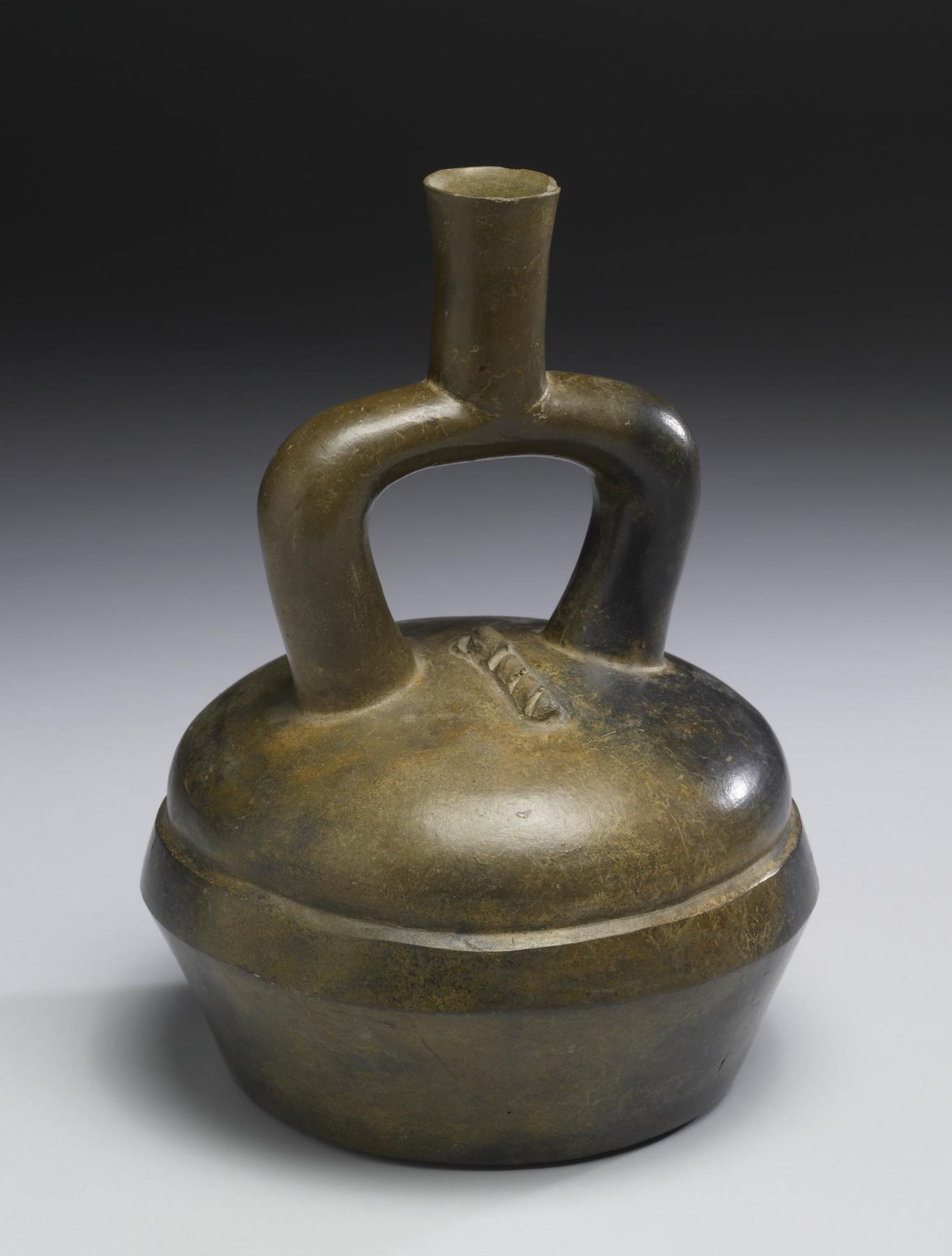Stirrup-spout Bottle
(Ancient Americas )
This stirrup spout vessel is quite plain, with just a simple braided design at the top, suggesting either a piece of woven cord or perhaps the pattern of a snake’s skin. However its burnished surface is satisfying almost completely without ornament.
The “stirrup spout” was one of the most common vessel forms in pre-Columbian Peru and the Andean area. A short spout at the top is attached to two tubes which join with the vessel itself. The form is reminiscent of a stirrup for horseback riding, hence the name. The resulting container was beautiful and versatile, since the main vessel could be shaped into many different forms, with a surface that was either carefully polished or highly textured. These vessels were also practical: in the extremely dry deserts of Peru, such a narrow opening prevented evaporation of the liquid held within. The complex shape of the neck also meant that it was easy to carry: two such vessels could be tied to the ends of a cord, to be slung over a person’s shoulder or a llama’s back. Large numbers of vessels like these have been found in burials of elites on the north coast of Peru beginning about 1800 BCE.
Provenance
Provenance (from the French provenir, 'to come from/forth') is the chronology of the ownership, custody, or location of a historical object. Learn more about provenance at the Walters.
Economos Works of Art; purchased by John G. Bourne, Santa Fe, New Mexico; given to Walters Art Museum, 2013.
Geographies
Peru, North Coast (Place of Origin)
Measurements
H: 9 1/2 x Diam: 7 in. (24.13 x 17.78 cm)
Credit Line
Gift of John G. Bourne, 2013
Location in Museum
Not on view
Accession Number
In libraries, galleries, museums, and archives, an accession number is a unique identifier assigned to each object in the collection.
In libraries, galleries, museums, and archives, an accession number is a unique identifier assigned to each object in the collection.
2009.20.96


